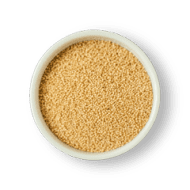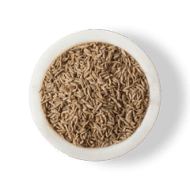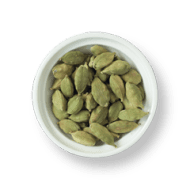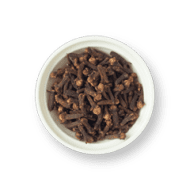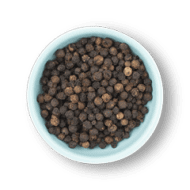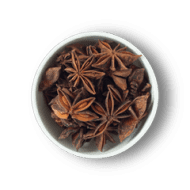What is Garam Masala?
What makes Indian cuisine much loved all over the world is its authentic taste and spicy flavours. One such spice that is hailed for its strong aroma and flavour is garam masala. Here, the word garam refers to “hot” and masala means “spice”. Thus, garam masala is none other than hot spices for you. Its name is also garam masala due to the fact that it warms the body and boosts metabolism.
Though it originated in India, garam masala powder is also popular in Pakistani, Bangladeshi, Nepalese and Afghan cuisine. The masala can be used alone or with other seasonings to spice up the dishes.
Coming back to the garam masala ingredients, they can vary from region to region. The composition also differs as per the regional and personal taste. For this, you will find that people prepare homemade garam masala by mixing the spices and grounding them together to a fine powder.
You too can learn how to make garam masala at home by following our recipe and video. From the garam masala ingredients quantity to the step-by-step guide, we have it all listed for you.
What Does Garam Masala Taste Like?
Spices such as coriander, cumin, cloves, cardamom and so on are blended together to get garam masala. The resultant powder is incredibly flavourful and fragrant. Garam masala powder also gives warm hints of the spice but does not become overwhelmingly hot.
How is it Used in Indian Kitchens?
Garam masala is one of the basic spices you might find in the majority of Indian households. It is used to bring more flavour to vegetarian as well as non-vegetarian dishes. People mostly add garam masala at the end of the cooking to ensure the dish gets the right aroma and seasoning.
But again, the additional time may vary from dish to dish. You can also add garam masala to soups, stir-fries, and sauteed vegetable dishes. Garam masala powder can also be used in adding marinades or rubs.
Tips to Make the Best Garam Masala
Even when you learn how to make garam masala, knowing the tips can make sure you do not commit the common mistakes and get the desired flavours. Thus, here are some tips you should keep in mind while making garam masala powder:
When you are making garam masala at home, always check the spices you are using. Their quality and freshness are the keys to the right flavour and fragrance of your garam masala. If you are unsure of the spices, you can taste them individually to get the taste.
Before blending the spices, take them out and remove any stones, husks or chaffs. If you find fungi or insects in the spices, discard them right away.
Also, try to sun dry or roast the spices in a pan or skillet before grinding them. This brings out the flavours more.
If you are unsure of the quantity of ingredients, grind smaller quantities of the garam masala or grind the spices separately. You can try the mixture on dal or tofu to check the flavour profile.
Varieties of Garam Masala
As mentioned before, there is no single authentic garam masala recipe. Every region as well as every chef has their own individual preferences based on which they can change garam masala ingredients and their quantity. Here are some of the variations you would usually find in various garam masala recipes:
In North Indian garam masala, you will find that black pepper is the only hot element. The masala is also quite mild and only hot peppers are added to get the heat.
In Southern India, garam masala is way hotter with the inclusion of red chillies. The spices can also vary depending on the region.
Common Alternatives for Garam Masala
In case you go short of garam masala and cannot prepare it on time, you can try the following substitutes to make up for the taste.
Curry powder: You can use curry powder by swapping garam masala entirely in your recipe. Though you will not get the warm and hot flavour of the spices, you can bring the missing flavour back in most Indian dishes.
Allspice and Cumin: For this substitute, you need to combine 4 parts ground cumin with 1 part allspice, and add it to the dish. This is a good and easy substitute when you’re in a hurry.
Chaat Masala: Another alternative to garam masala is chaat masala. It contains a mixture of amchoor, cumin, coriander, ginger, black pepper, asafoetida, salt, and chili. When adding it into the dish, use smaller quantities and add slowly to ensure it does not overpower your dish.
Similar Recipes To Try
Just like garam masala, you can also prepare other masalas to add to various
healthy recipes. Some other masalas you can make are as follows:
Gun Powder: The name may seem weird but the taste of gunpowder cannot be more amazing. Also known as Milaga Podi, gun powder is extremely popular in Southern India. This spicy powder uses a lot of dried chillies and is sprinkled over dosas. You can also add it into the rice along with ghee and relish its hot flavour.
Biryani Masala: As the name suggests, Biryani Masala is a fabulous blend of mouth-watering spices that are added to the famous biryani dish. Though it can be easily bought in the market, the flavour of homemade biryani masala is just matchless.
Peri Peri Masala: Peri peri masala is a combination of spices such as oregano, garlic powder, ginger powder, black pepper and the list is long. All these blended together result in a hot and spicy masala that can take your regular dish to another level with its wonderful flavour. Unlike other masalas we talked about, peri peri masala is also used as a seasoning on fancy pastas, fries, and even your roasted makhanas to elevate the flavours.
Spices can drastically change the way your food tastes. All you need to know is how to use them properly. Make the garam masala today and we are sure your food will become tastier than before.
Types of Gyms by Cult.fit



